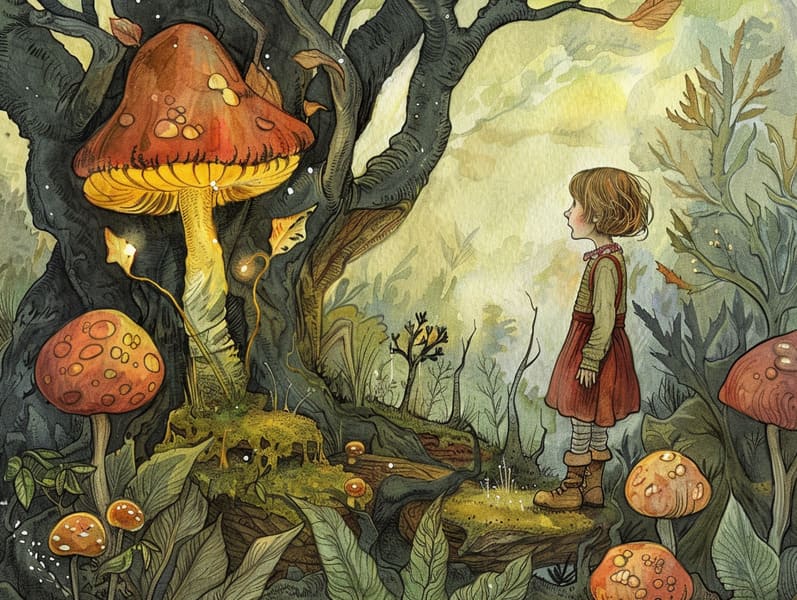
Historical fairy tales have timeless appeal. These stories have been recounted from one generation to the next centuries before they were ever recorded. They arose from a variety of backgrounds, including African traditions. They were initially transmitted among grown-ups, often carrying themes and messages pertaining to the societal norms and beliefs of the time.
The Brothers Grimm, the two Grimm brothers, were among the first to collect many of these beloved narratives. Their volume, "Grimm's Fables," included narratives like "Cinderella," "Hansel and Grethel," and "Schneewittchen," which have since become pillars in the world of traditional fairy tales. Similarly, the Danish author's delightful fairy tales, such as "The Little Mermaid," and "The Story of the Ugly Duckling," have gained the love worldwide, ensuring their place in the pantheon of classic fairy tales.
Despite their historical roots, these stories remain as applicable as ever, especially as kids' bedtime tales. These whimsical stories are now available in various formats, including colorful picture books, whimsical animations, and online storybooks.
Their continued relevance can be credited to several captivating elements:
Moral Lessons: Old fairy tales often impart important moral lessons. Narratives like "The Wolf and the Liar" teach the virtue of truthfulness, while "The Tale of the Tortoise and the Hare" emphasize the benefits of perseverance and unpretentiousness. These narratives offer little ones clear distinctions between virtue and vice, forming their moral compass in a kind yet lasting way.
Compassion and Insight: Traditional fairy tales frequently involve protagonists facing challenges and struggles, inspiring children to feel with their struggles and rally behind their triumphs. For instance, "The Story of Beauty and the Beast" highlights the virtue of looking past the exterior to know the true essence of a soul, strengthening empathy and comprehension.
Cultural Knowledge: Many timeless fairy tales are imbued with the cultural contexts from which they emerged. Delving into these tales can provide captivating looks into different social structures, strengthening a sense of global insight and awareness.
Imagination and Innovation: The extraordinary elements in timeless fairy tales—talking animals—promote children’s innovative ideas. These fairy tales transport readers to otherworldly realms, kindling creative ideas and a sense of fascination that stays a lifetime.
Ancient fairy tales are not only alluring but also enlightening. They work as whimsical tools in developing various brain and heart skills in young readers. When fairy tales are spoken, they cultivate communication skills by bringing new phrases and detailed sentence structures. This practice also enhances hearing abilities and attention span, as the young keep up with the story, enthusiastic to see what happens next.
Furthermore, debating the themes and characters of old fairy tales can improve website problem-solving abilities and intellectual skills. The young are led to spot patterns, predict happenings, and understand cause and effect. These debates also advance the young reveal their thoughts and feelings, promoting their emotional intelligence.
In today’s modern era, the proliferation of digital storybooks has made these narratives more accessible than ever. Internet resources and mobile apps feature huge assortments of timeless fairy tales that can be accessed or listened to anytime, anywhere. Fairy tales spoken are particularly prevalent, presenting an enjoyable way for the young to appreciate these delightful tales. Narrated books and read-aloud videos move characters and settings to life, often supplemented by entrancing background sounds and songs that enhance the narrative experience.
The everlasting appeal of traditional fairy tales lies in their ability to adapt to current times while keeping hold of their underlying messages. Contemporary takes of these stories often highlight more diverse figures and modern settings, making them relatable to today’s audience. However, the key lessons of valor, compassion, and righteousness remain unchanged, continuing to touch readers of all ages.
Old fairy tales also offer a sense of warmth and comprehensibility. They make accessible a coherent narrative with a definite beginning, middle, and end, often ending with the ending of conflicts and the triumph of rightness over wrongness. This dependability can be heartening for children, making available a sense of consistency in an ever-changing world.
Traditional fairy tales continue to enchant and teach new generations, maintaining their loveliness and pertinence in modern society. As nighttime stories for kids, they impart upon a perfect blend of wonder and wisdom, furthering moral values, empathy, and creativity. The abundance of digital storybooks and the commonness of fairy tales read aloud ratify that these classic stories remain accessible to new generations.
By retaining and narrating these fairy tales, we continue to pay tribute to the rich tapestry of creativity and cultural heritage. Whether you are delving into a richly illustrated book, seeing a web collection, or listening through an read-aloud story, the grandeur of bedtime fairy tales is always within reach. These fairy tales point out of the unwavering nature of storytelling and its ability to bring us together across epochs and places.
Even if you are seeing a richly illustrated book, perusing a cyber collection, or listening on an audiobook, the grandeur of traditional fairy tales is always within reach.
These stories remind us of the unwavering essence of tales and its ability to tie us across time and space, forging a link that captivates and teaches alike.